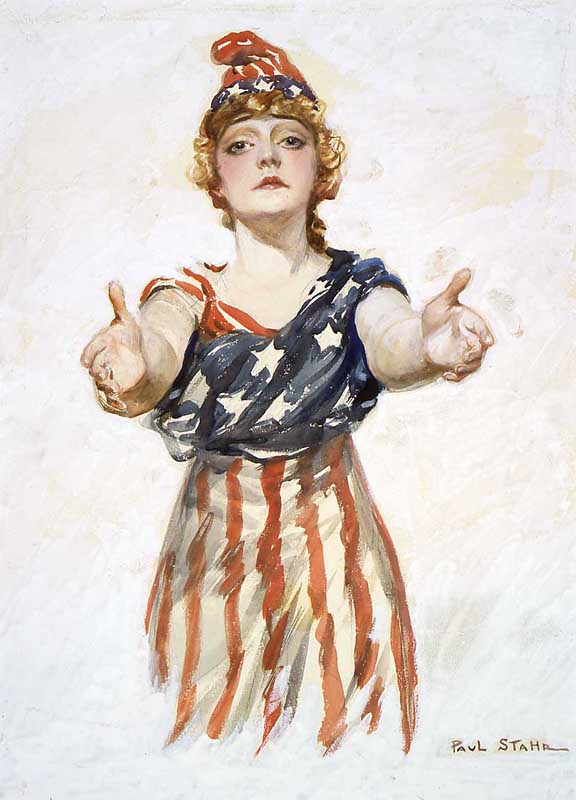From moon goddess to pussy hat: the long history of revolutionary headwear
Posted by staff / January 19, 2017
The pussy hat quickly became a symbol of the Women’s March on Washington in response to certain offensive remarks and to the dismay of some, yet there are fascinating historical links to infuse them with a fitting revolutionary spirit.
This story begins with a hat I bought in high school. After purchasing it, someone asked me if I knew what a mob cap was and explained it was modeled after caps worn during the French Revolution. It was a pretty goofy-looking hat, but being young, a lover of hats, and enamored of all things with a whiff of revolution (and France), I bought it and kept the hat in the back of drawer and the story in the back of my mind.
Cue this morning when I wondered if this so-called mob cap could be substituted for a pussy hat in a pinch (because I’m a phenomenally slow knitter). A quick Google search revealed something that looked more like a doily with a ribbon, which was neither my hat, nor particularly revolutionary looking. Scrap that idea.
What I did find was the history of the bonnet rouge or “Phrygian cap,” a cap that was not only worn during the French Revolution, but dated back thousands of years to the Thracian precursor of Artemis, goddess of the moon and hunt, and also appeared on Columbia, who, in our own pre-revolutionary days, “was visualized as a goddess-like female national personification of the United States and of Liberty herself.” In fact, it’s also part of the Seal of the U.S. Senate.

Artemis Bendis, molded terracotta figurine, (Tanagra?) c. 350 BC, (Louvre)
Photo credit: Wikimedia Commons

Personified Columbia in American flag gown and Phrygian cap, which signifies freedom and the pursuit of liberty, from a World War I patriotic poster.
Photo credit: – Herbert Hoover Library, National Archives and Records Administration
Bingo!
It isn’t just the U.S., though, that adopted the cap. It can also be seen in the coat of arms of several Latin American countries, embodying anti-colonial sentiment.
As you can see, this simple hat could be the most long-standing fashion statement in the history of the world. Who would guess a simple red conical hat could mean so much?
So, while the pussy hat may at first seem too whimsical for such a serious cause, we could also see it as adding an extra point to the long history of fighting for liberty.
Down the rabbit hole of history.
Comments are off for this post.